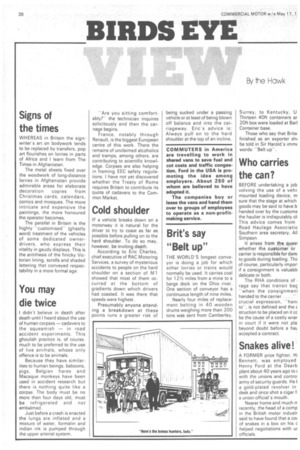You may die twice
Page 40

If you've noticed an error in this article please click here to report it so we can fix it.
I didn't believe in death after death until I heard about the use of human corpses — cadavers to the squeamish — in road accident experiments. This ghoulish practice is, of course, much to be preferred to the use of live animals, whose only offence is to be animals.
Because they have similarities to human beings, baboons, pigs, Belgian hares and Macaque monkeys have been used in accident research but there is nothing quite like a corpse. The body must be no more than four days old, must be refrigerated and not embalmed.
Just before a crash is enacted the lungs are inflated and a mixture of water, formalin and indian ink is pumped through the upper arterial system. "Are you sitting comfortably?" the technician inquires solicitously and then the carnage begins.
France, notably through Renault, is the biggest European centre of this work. There the remains of unclaimed alcoholics and tramps, among others, are contributing to scientific knowledge. Corpses are also helping in framing EEC safety regulations. I have not yet discovered whether the Treaty of Rome requires Britain to contribute its quota of cadavers to the Common Market.








































































































